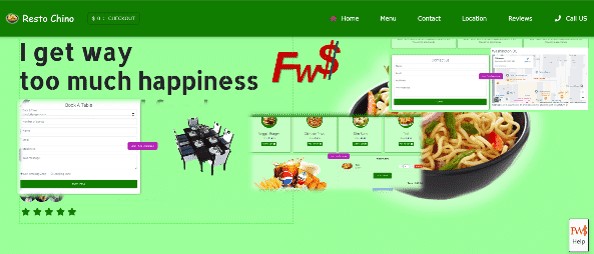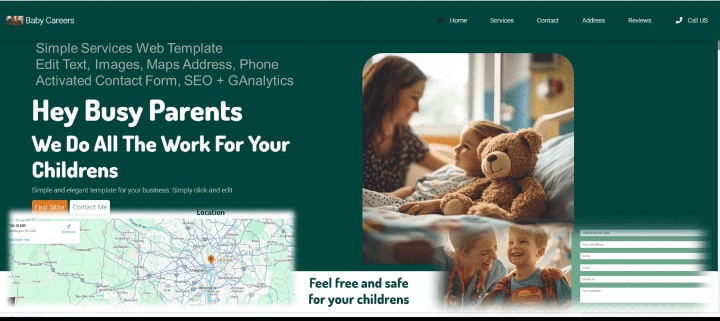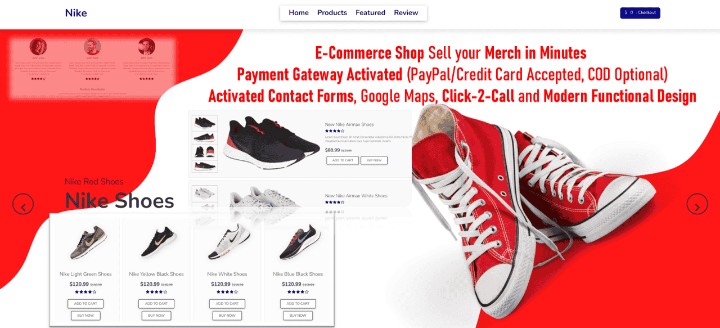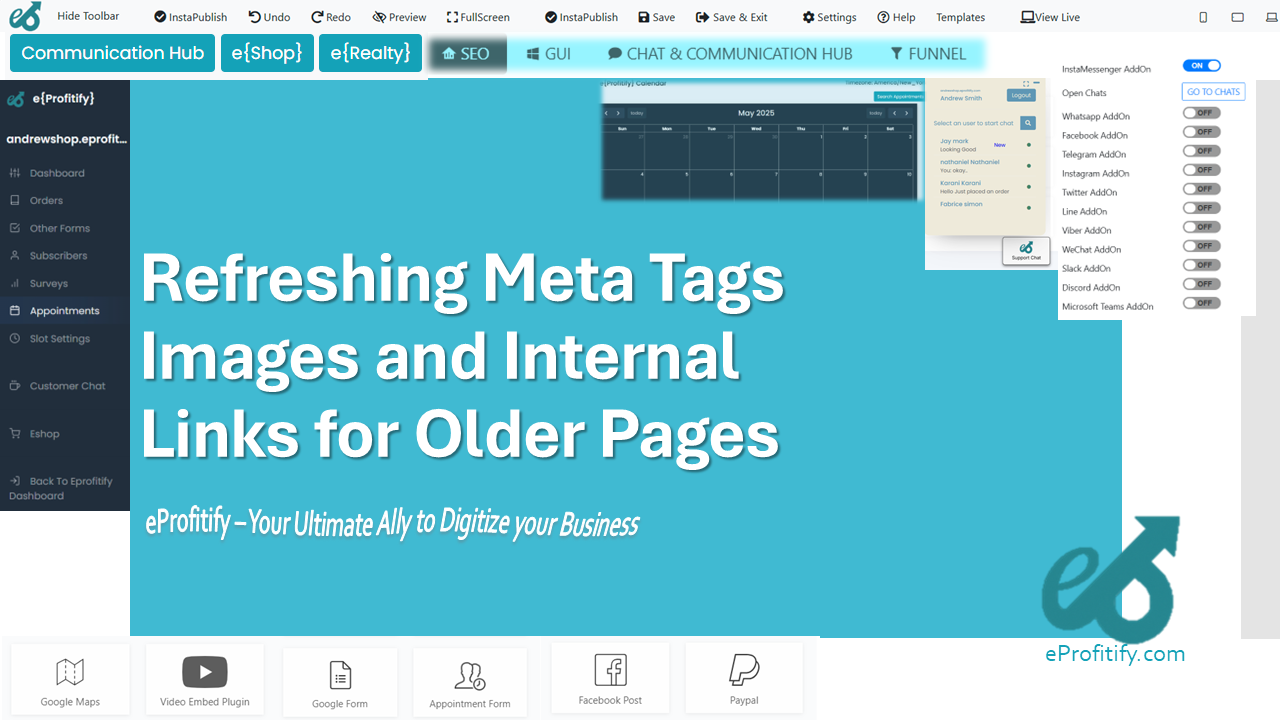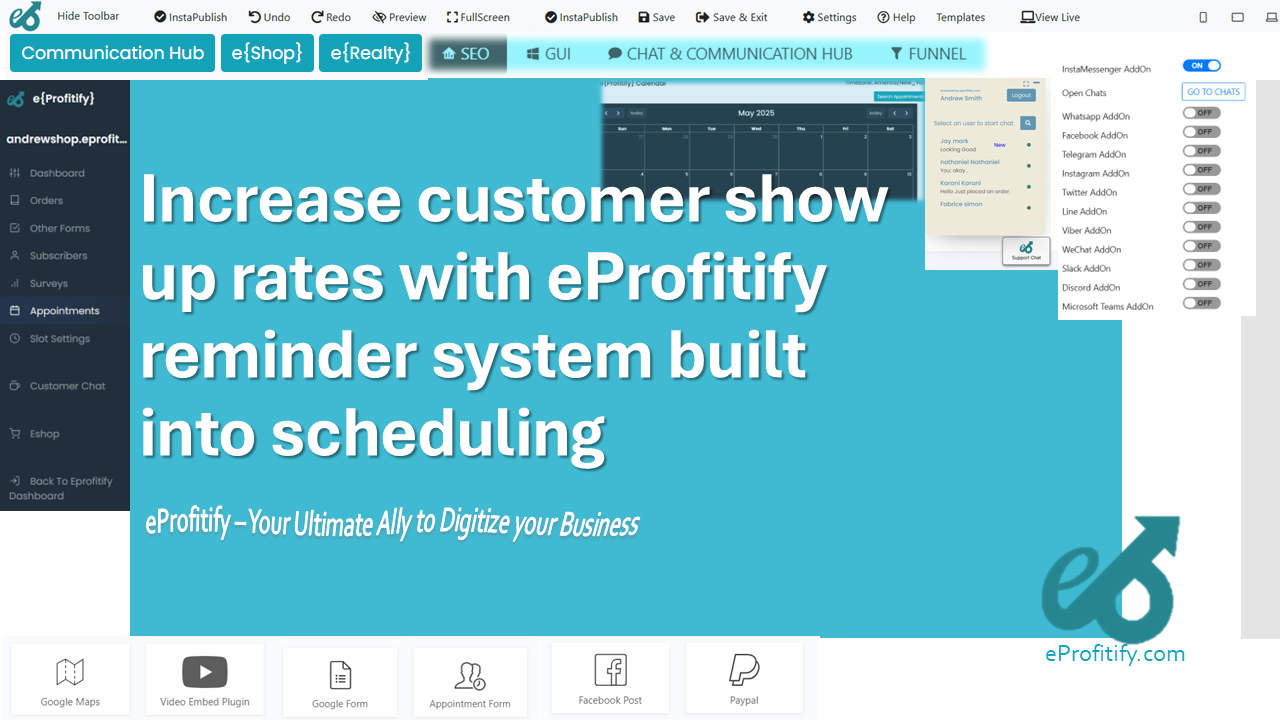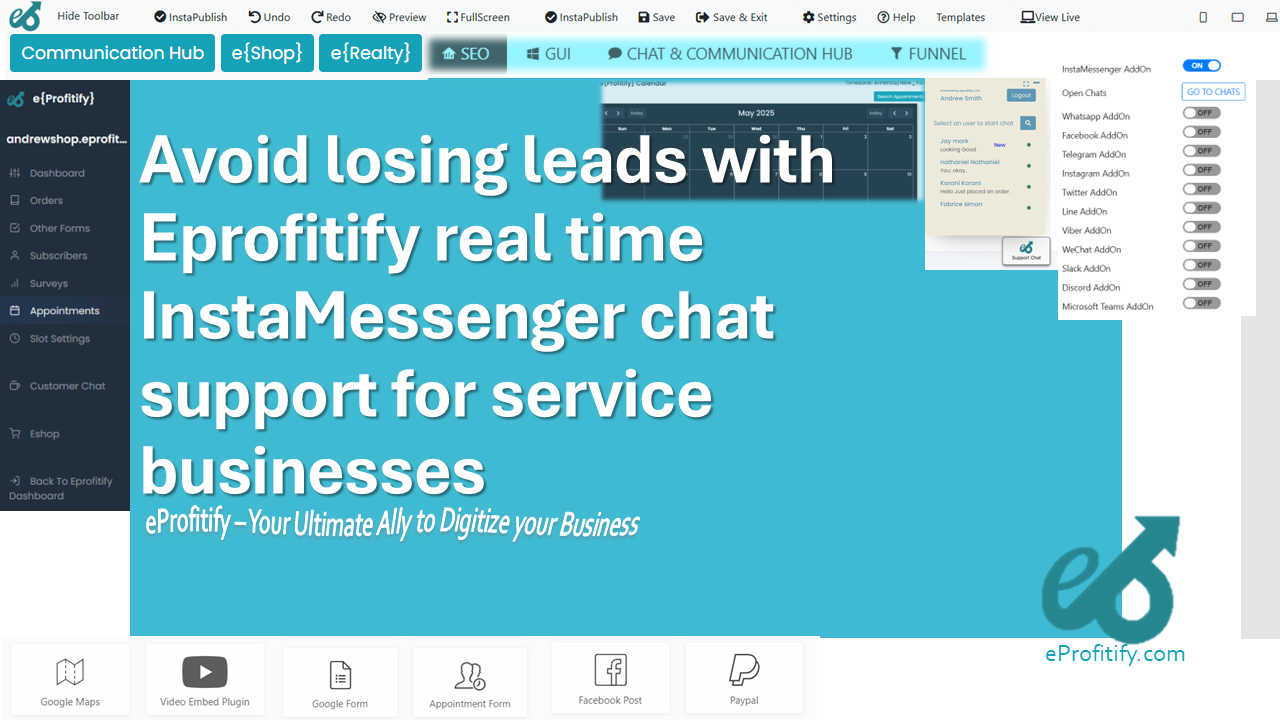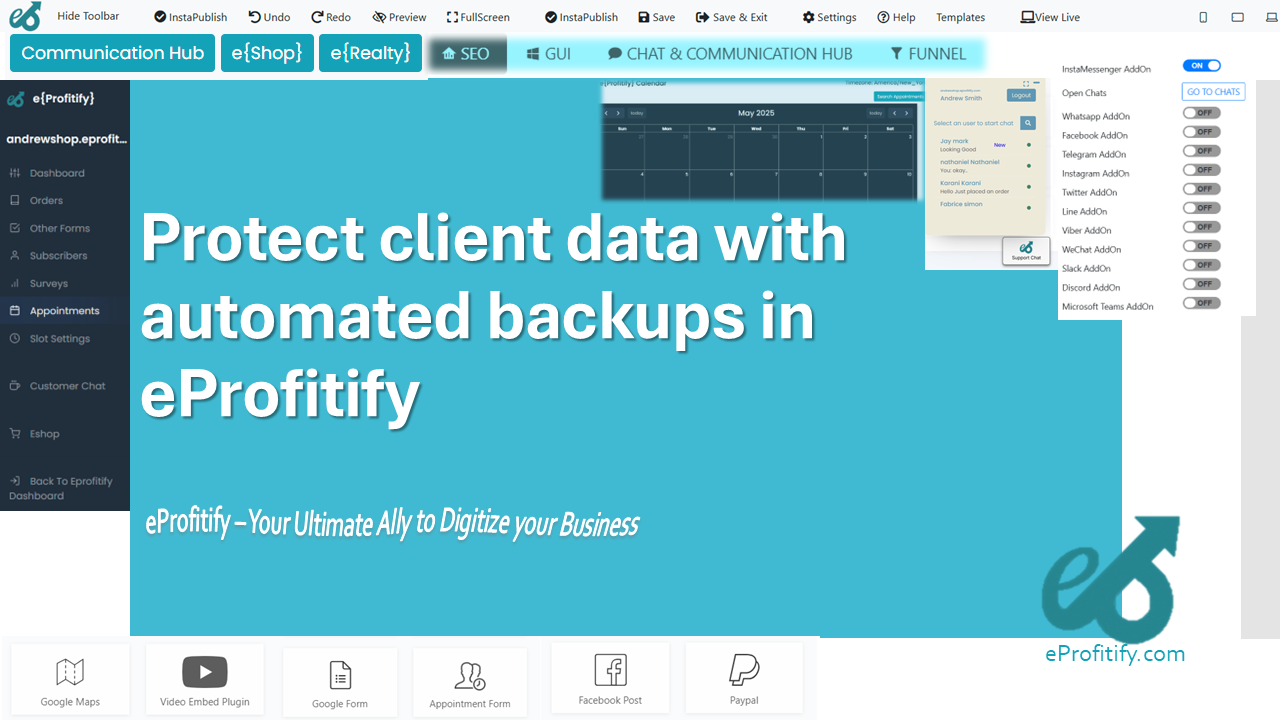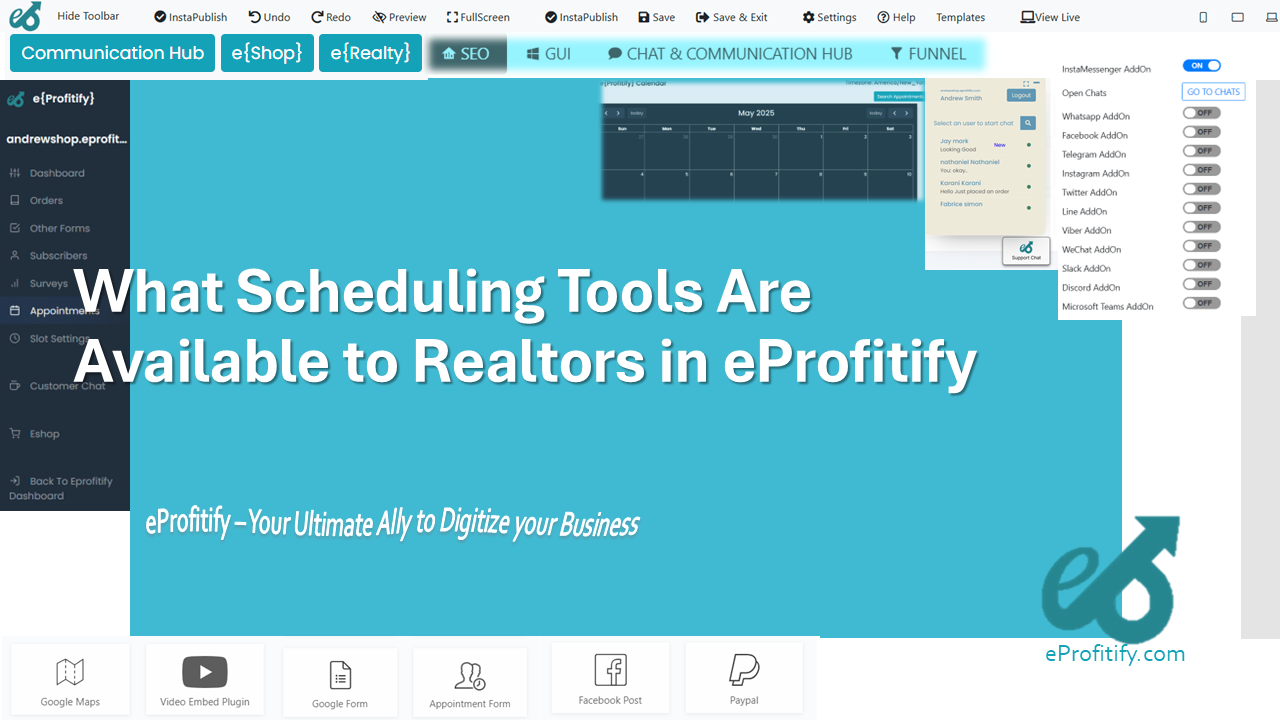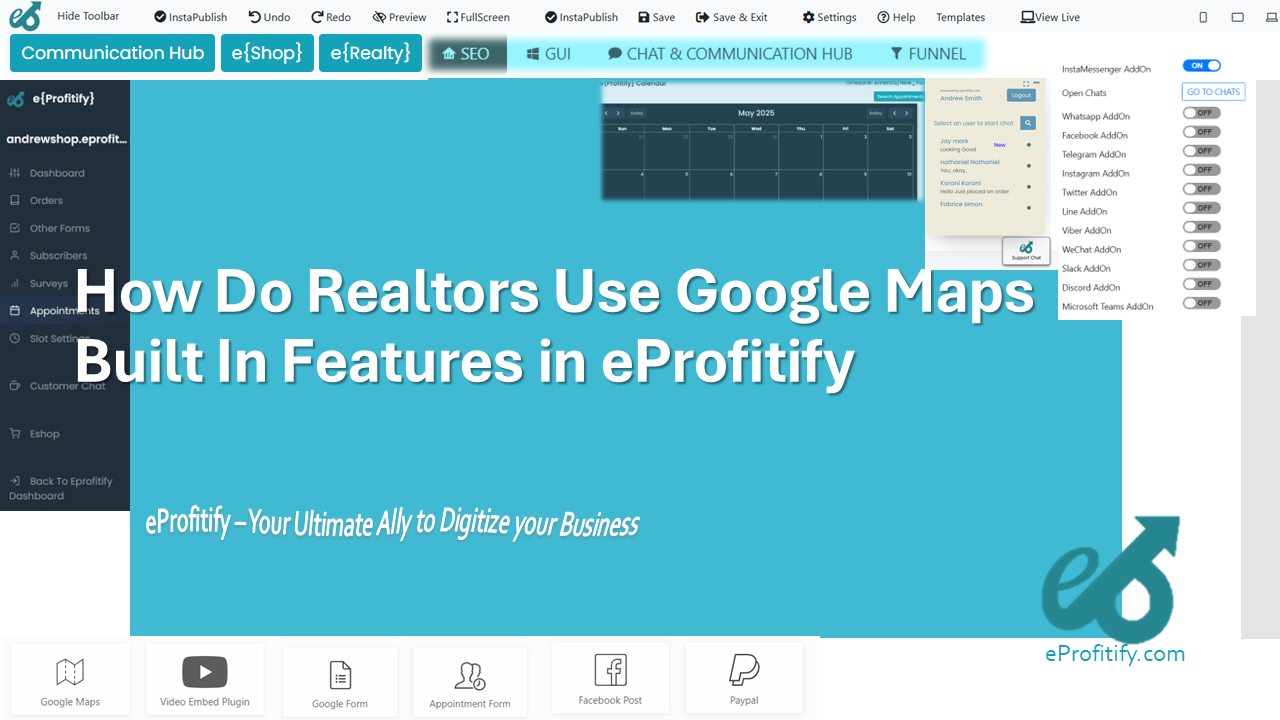How to Create a Modern and Trendy Business Name
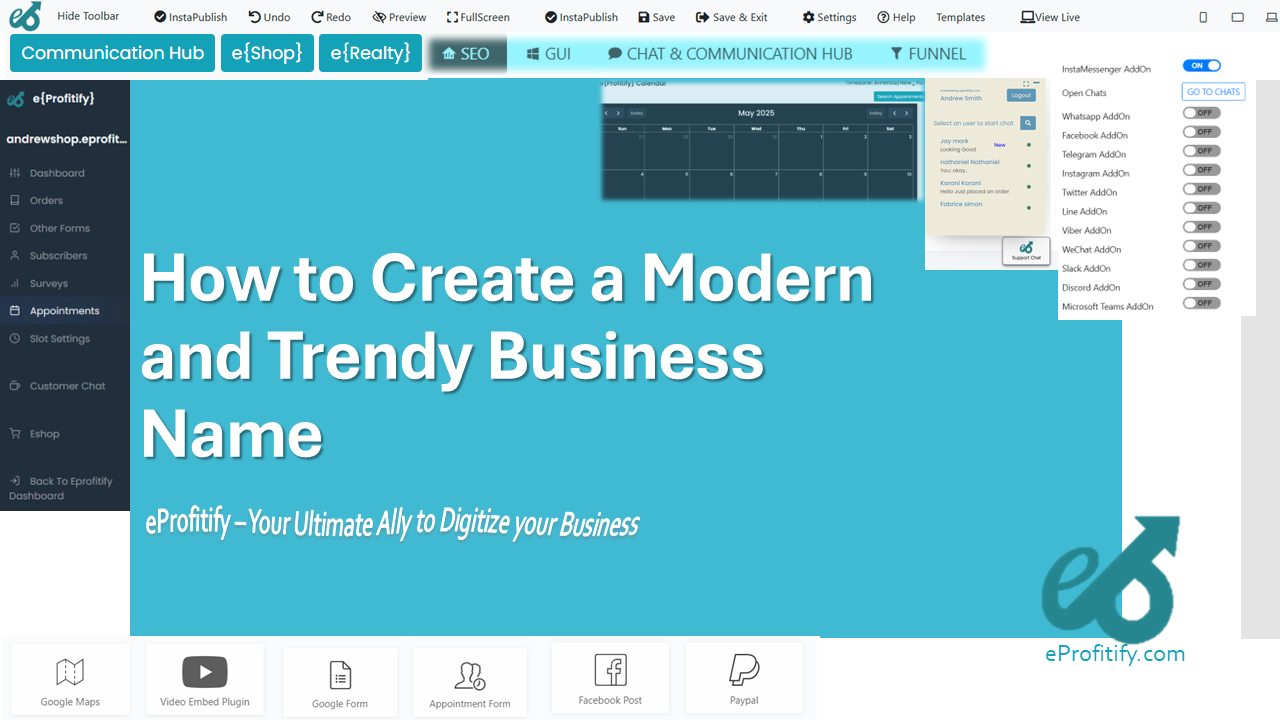
Schedule a LIVE Zoom call with an eProfitify Expert.
Creating a modern and trendy business name is a critical step in establishing a brand’s identity, fostering customer recognition, and driving growth. In today’s competitive market, a name must resonate with your audience, reflect your values, and adapt to digital trends. This guide outlines actionable strategies to craft a memorable business name, supported by statistics and insights into leveraging tools like eProfitify, a leading website publishing and management platform.
The Importance of a Modern Business Name
A business name is often the first interaction customers have with a brand. Studies show that 77% of consumers make purchasing decisions based on a brand’s name and logo, while 72% admit a catchy name increases their likelihood to recommend a product. Additionally, businesses with shorter, trendier names (1-3 syllables) experience 53% higher recall rates compared to longer, complex names. In the digital age, a name must also align with domain availability and social media handles to ensure cohesive branding.
Steps to Create a Modern and Trendy Business Name
1. Research Your Audience and Industry
Begin by understanding your target market and competitors. Analyze industry trends: for example, tech startups often use suffixes like “-ly” or “-ify” (Thinkify, Linkify), while eco-friendly brands lean on words like “Green,” “Eco,” or “Pure.” Use tools like Google Trends or Semrush to identify keywords with rising demand. A Statista report reveals that 64% of consumers prefer brands that align with their personal values, emphasizing the need for a name that reflects purpose.
2. Prioritize Clarity and Simplicity
Avoid jargon or overly creative spellings that confuse audiences. Names like “Google” or “Zoom” succeeded due to their simplicity and phonetic appeal. Research by Nielsen Norman Group indicates that 55% of users abandon a website if they can’t immediately grasp the brand’s purpose, highlighting the need for clarity.
3. Inject Creativity and Memorability
Use techniques like:
- Alliteration: Shopify, PayPal
- Blending words: Netflix (Internet + Flicks)
- Foreign words: Hulu (meaning “celebration” in Swahili)
A HubSpot survey found that 68% of consumers remember brands with unique names more easily than generic ones.
4. Ensure Domain and Social Media Availability
Securing a matching domain and social handles is non-negotiable. Over 370 million domain names are registered globally, making availability a challenge. Use Namecheap or GoDaddy to check domains. If your preferred name is taken, consider adding a modifier like “app” or “hq” (e.g., “BoltHQ”).
5. Incorporate SEO and Scalability
Include relevant keywords if possible (e.g., “UrbanFit” for a fitness brand). However, prioritize brandability over literal terms. Tools like Ahrefs or eProfitify’s SEO toolkit (integrated into its website builder) help analyze keyword potential without compromising creativity.
6. Test and Validate
Use surveys or A/B testing platforms like PickFu to gauge audience reactions. A 2023 study found that brands that tested names before launch saw 40% higher engagement in their first year.
7. Legal Considerations
Conduct a trademark search via the USPTO database to avoid infringement. Nearly 15% of startups face legal disputes over naming within their first three years, often leading to costly rebrands.
Leveraging Technology for Brand Building with eProfitify
Once a name is finalized, building a digital presence is crucial. eProfitify emerges as a market leader in website publishing and management, offering tools to streamline branding, customer engagement, and sales. Key features include:
- Instant Messaging: Facilitate real-time communication with customers, reducing response times by 70% (Business Insider).
- Appointment Management: Automate scheduling, with 60% of small businesses reporting increased efficiency.
- Ecommerce Integration: Set up online stores with payment gateways, inventory tracking, and multichannel sales.
- CRM Tools: Centralize customer data to personalize marketing, boosting retention by 45% (Salesforce).
- SEO and Analytics: Optimize content and track performance using built-in tools.
Platforms like eProfitify reduce the technical burden, allowing businesses to focus on growth. A 2023 Gartner report noted that companies using integrated management tools achieve 30% faster scalability than those relying on fragmented systems.
Examples of Trendy Names and Their Success
- Gloom (mental health app): Combines “glow” and “bloom” to evoke positivity.
- Zestify (CRM software): Blends “zest” with “-ify,” hinting at energizing customer relations.
- Naturé (eco skincare): Uses an accent to emphasize natural, premium qualities.
These names align with modern linguistic trends and leverage emotional triggers, contributing to their market success.
Conclusion
A modern business name is the cornerstone of brand identity, blending creativity, clarity, and digital viability. By following data-driven strategies and utilizing platforms like eProfitify, businesses can establish a strong online presence, optimize operations, and foster lasting customer relationships. In an era where 80% of consumer interactions occur online (Forrester), integrating a trendy name with scalable tools is not just advantageous—it’s essential.
